-
1 of 253523 objects
Die Schuldigkeit des ersten Gebots = The duty of the first commandment 1767
106 leaves numbered 1–104. 1 blank leaf between ff.11 & 12; f.7 originally 2 leaves stuck with sealing wax (now separated); 8 other blank pages; staves hand-ruled with stave-pen, 10 to a page, except for one quire 12 to a page | 21.5 cm (Height) x 3.0 cm (Depth) (book measurement (conservation)) | RCIN 1140995
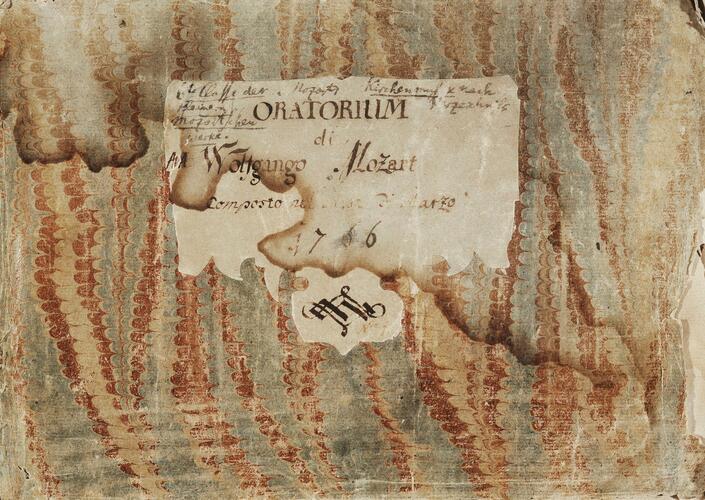
Wolfgang Amadeus Mozart (1756-91)
Die Schuldigkeit des ersten Gebots = The duty of the first commandment / Wolfgang Amadeus Mozart 1767

Wolfgang Amadeus Mozart (1756-91)
Die Schuldigkeit des ersten Gebots = The duty of the first commandment / Wolfgang Amadeus Mozart 1767

Wolfgang Amadeus Mozart (1756-91)
Die Schuldigkeit des ersten Gebots = The duty of the first commandment / Wolfgang Amadeus Mozart 1767

Wolfgang Amadeus Mozart (1756-91)
Die Schuldigkeit des ersten Gebots = The duty of the first commandment / Wolfgang Amadeus Mozart 1767

Wolfgang Amadeus Mozart (1756-91)
Die Schuldigkeit des ersten Gebots = The duty of the first commandment / Wolfgang Amadeus Mozart 1767
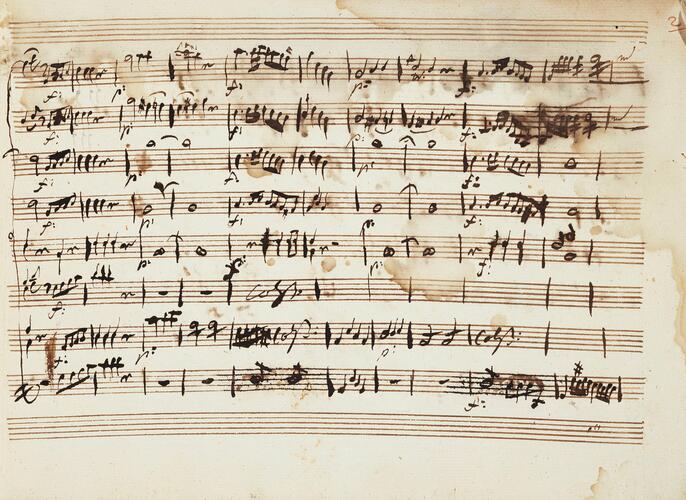
Wolfgang Amadeus Mozart (1756-91)
Die Schuldigkeit des ersten Gebots = The duty of the first commandment / Wolfgang Amadeus Mozart 1767
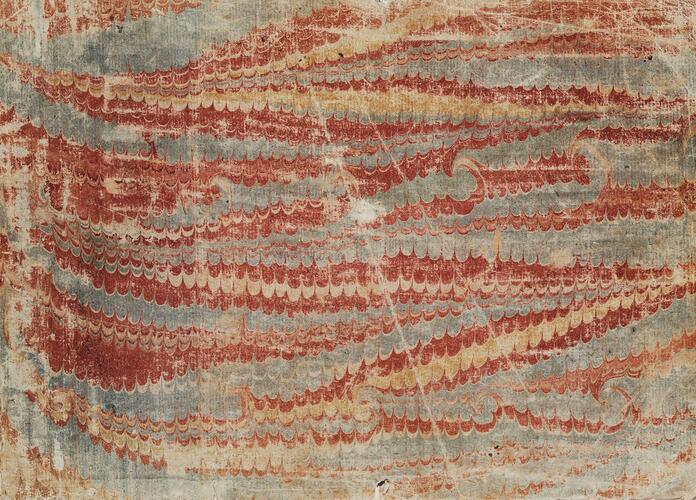
Wolfgang Amadeus Mozart (1756-91)
Die Schuldigkeit des ersten Gebots = The duty of the first commandment / Wolfgang Amadeus Mozart 1767
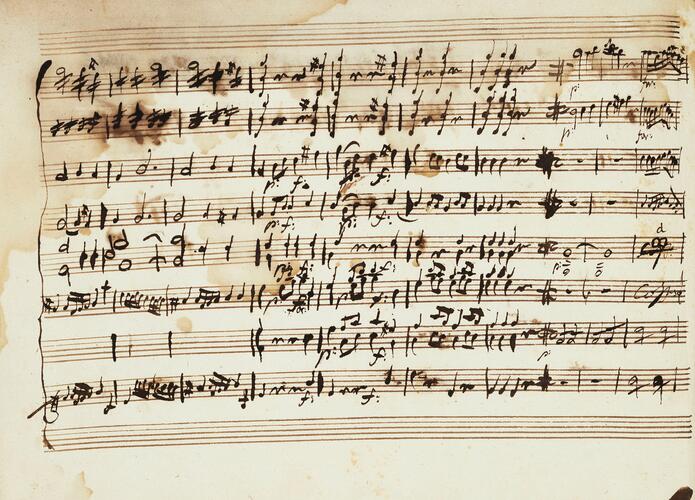
Wolfgang Amadeus Mozart (1756-91)
Die Schuldigkeit des ersten Gebots = The duty of the first commandment / Wolfgang Amadeus Mozart 1767
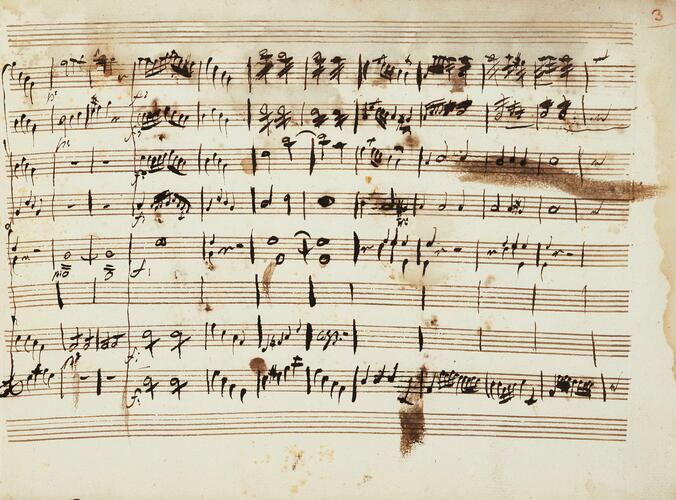
Wolfgang Amadeus Mozart (1756-91)
Die Schuldigkeit des ersten Gebots = The duty of the first commandment / Wolfgang Amadeus Mozart 1767
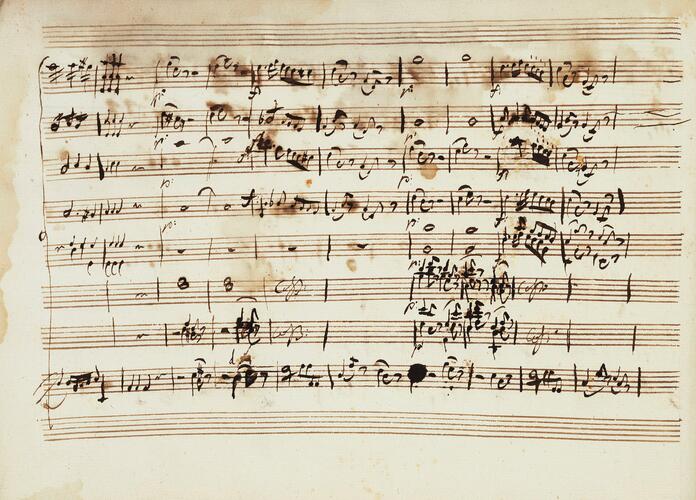
Wolfgang Amadeus Mozart (1756-91)
Die Schuldigkeit des ersten Gebots = The duty of the first commandment / Wolfgang Amadeus Mozart 1767

Wolfgang Amadeus Mozart (1756-91)
Die Schuldigkeit des ersten Gebots = The duty of the first commandment / Wolfgang Amadeus Mozart 1767

Wolfgang Amadeus Mozart (1756-91)
Die Schuldigkeit des ersten Gebots = The duty of the first commandment / Wolfgang Amadeus Mozart 1767
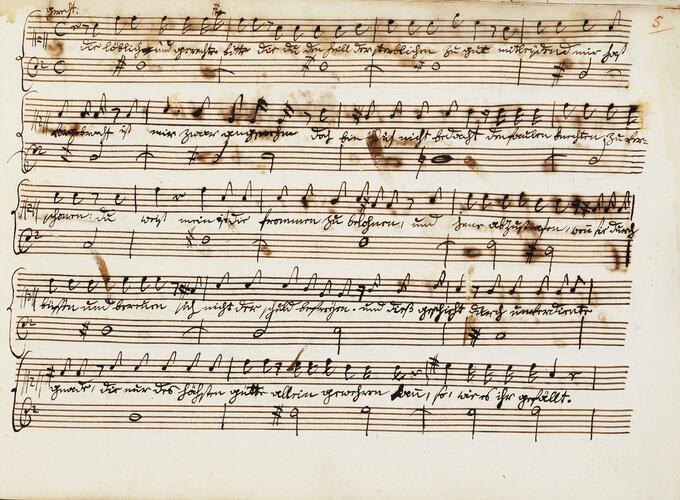
Wolfgang Amadeus Mozart (1756-91)
Die Schuldigkeit des ersten Gebots = The duty of the first commandment / Wolfgang Amadeus Mozart 1767
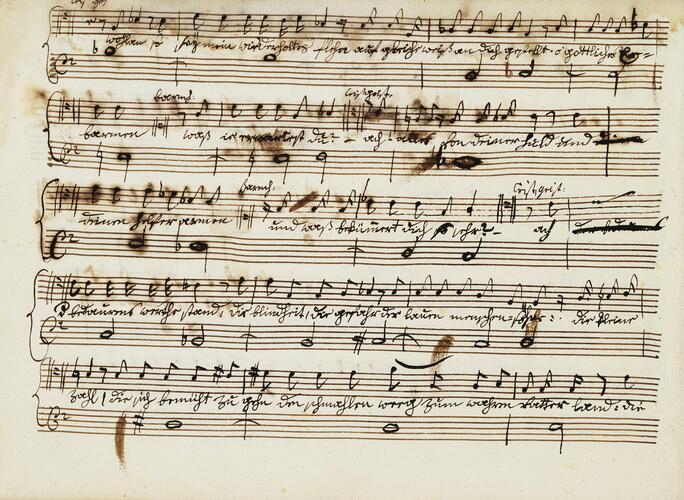
Wolfgang Amadeus Mozart (1756-91)
Die Schuldigkeit des ersten Gebots = The duty of the first commandment / Wolfgang Amadeus Mozart 1767
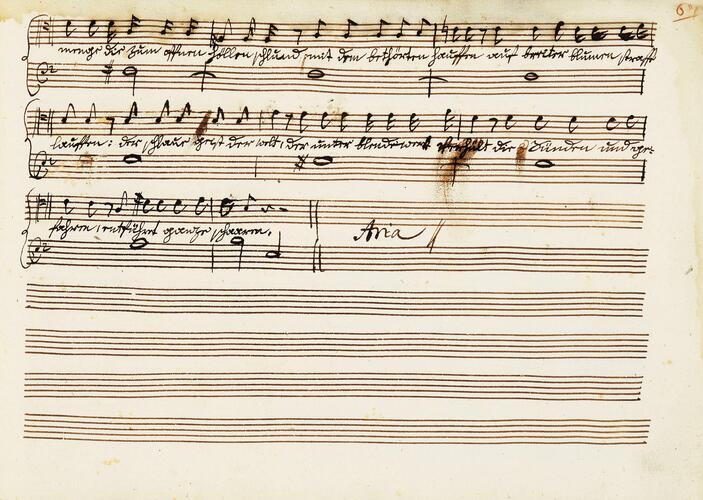
Wolfgang Amadeus Mozart (1756-91)
Die Schuldigkeit des ersten Gebots = The duty of the first commandment / Wolfgang Amadeus Mozart 1767
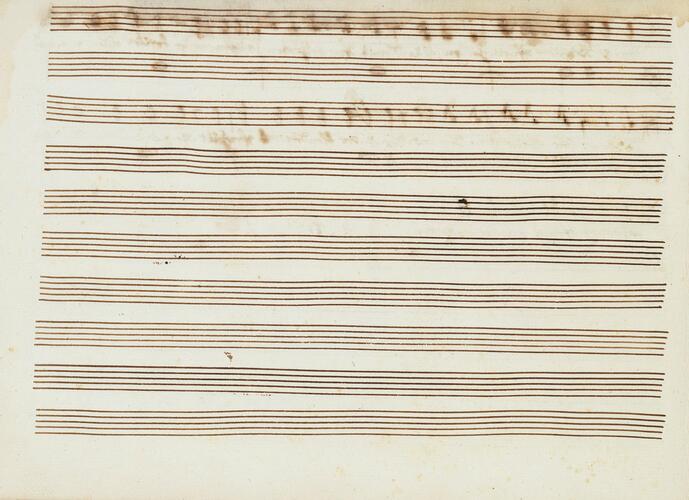
Wolfgang Amadeus Mozart (1756-91)
Die Schuldigkeit des ersten Gebots = The duty of the first commandment / Wolfgang Amadeus Mozart 1767

Wolfgang Amadeus Mozart (1756-91)
Die Schuldigkeit des ersten Gebots = The duty of the first commandment / Wolfgang Amadeus Mozart 1767
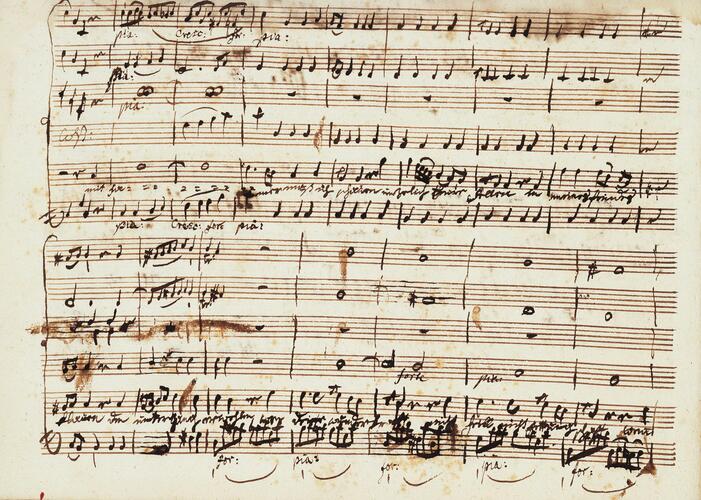
Wolfgang Amadeus Mozart (1756-91)
Die Schuldigkeit des ersten Gebots = The duty of the first commandment / Wolfgang Amadeus Mozart 1767
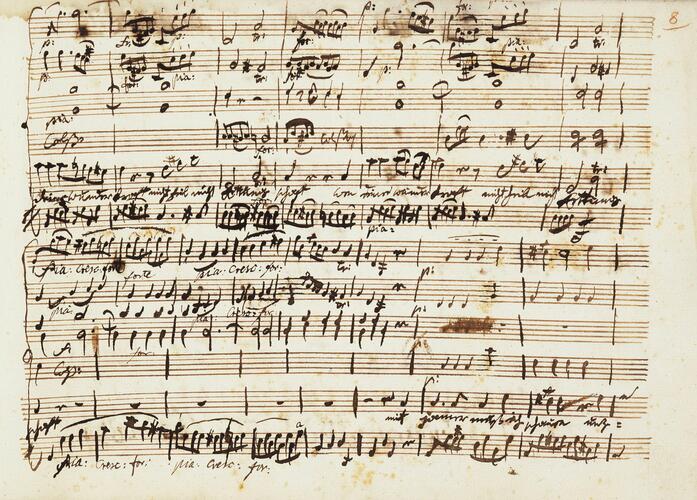
Wolfgang Amadeus Mozart (1756-91)
Die Schuldigkeit des ersten Gebots = The duty of the first commandment / Wolfgang Amadeus Mozart 1767
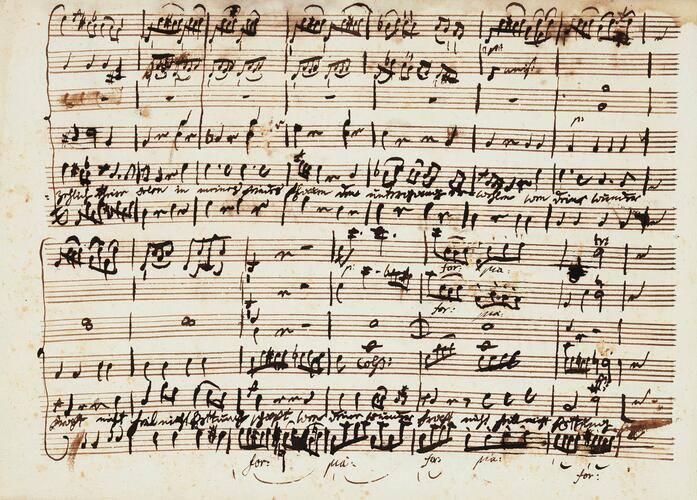
Wolfgang Amadeus Mozart (1756-91)
Die Schuldigkeit des ersten Gebots = The duty of the first commandment / Wolfgang Amadeus Mozart 1767
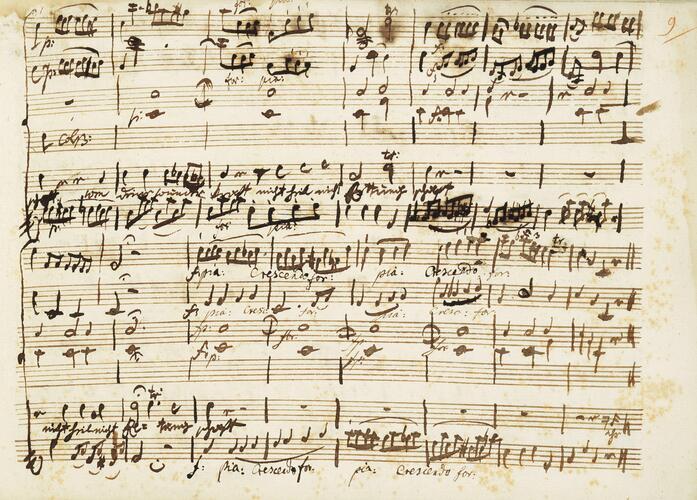
Wolfgang Amadeus Mozart (1756-91)
Die Schuldigkeit des ersten Gebots = The duty of the first commandment / Wolfgang Amadeus Mozart 1767






















-
Original autograph manuscript in the hand of Mozart.
Die Schuldigkeit des ersten Gebotz was first performed on 12 March 1767 in the Knight’s Hall of the Archbishop’s Palace in Salzburg, as part of the custom of the ecclesiastical court to perform religious dramas during Lent (when secular plays were forbidden). The stories for these dramas were generally drawn from the Bible or the Lives of the Saints, and music played a prominent part in their performance. The libretto, written by Ignatz Anton Weiser, tells the story of a reluctant or lapsed Christian, reclaimed for the faith by the Spirit of Christianity (each performed by tenors), aided by Divine Justice and Divine Mercy, against the blandishments of the Spirit of Worldliness (performed by three sopranos). The score was composed by a young Mozart in 1767 (aged just 11) along with Michael Haydn (younger brother of the more famous Joseph) and Anton Cajetan Aldgasser (organist and composer at Salzburg Cathedral); they wrote parts one, two and three respectively, though only Mozart’s contribution survives.
While we have music by Mozart from the age of five, this sacred oratorio is probably his earliest extensive dramatic work, and shows the increasing sophistication of his orchestration and musical characterisation, developed during the previous few years. He had accompanied his father Leopold and sister Nannerl (a highly talented keyboard player) on a musical tour of Europe, where he came under the influence of composers such as Gluck and Johann Christian Bach. A fifteen-month stay in London exposed him to the rich musical society there, and gave him an audience for his early symphonies and concert arias, while the influence of Bach was to have a lasting effect upon his music. While the score is dated 1766, recent scholarship suggests that this is more likely to be 1767, after Mozart’s return from his tour; the style of the piece reflects the improving influence of his travels.
The score of Mozart’s oratorio was long in the possession of Johan Anton André, Mozart’s first cataloguer before the more famous Köchel, and was acquired from André by Prince Albert in 1841. Albert was himself a skilled amateur composer as well as a collector of music, and put his enthusiasm to work directing some of the Concerts of Antient Music. These public performances were instituted in 1776, with the intention of performing music that was at least 20 years old. Their directors tended to be either royal (George III was also actively engaged) or aristocratic. The performance on 8 May 1844 was much admired, being a ’grand’ concert (that is, one which Queen Victoria and suite would attend, thereby guaranteeing a large audience) and with the programme compiled by Prince Albert. It included part of Die Schuldigkeit: ‘taken from the score of an oratorio composed by Mozart at the early age of ten years; which is in Prince Albert’s possession, in the composer’s own handwriting. There is in it something of affinity to Mozart’s maturer works. The melody is elegant and flowing, and the accompaniment by the stringed instruments at once light and spirited’. Queen Victoria wrote in her journal: The music had been most beautifully selected by Albert, & even the ignorant public, (I must call them so, as their taste is generally so bad) were pleased.’ [Queen Victoria’s Journal, 8 May 1844]
Provenance
This manuscript belonged to Johan Anton André, Köchel’s predecessor as cataloguer of Mozart’s oeuvre, who noted on f.1r that it is in Mozart’s hand. Purchased by Prince Albert in 1841, and placed in the Royal Library in 1863 by Queen Victoria.
-
Creator(s)
Acquirer(s)
-
Medium and techniques
106 leaves numbered 1–104. 1 blank leaf between ff.11 & 12; f.7 originally 2 leaves stuck with sealing wax (now separated); 8 other blank pages; staves hand-ruled with stave-pen, 10 to a page, except for one quire 12 to a page
Measurements
21.5 cm (Height) x 3.0 cm (Depth) (book measurement (conservation))
21.5 x 3.0 cm (book measurement (inventory))
Alternative title(s)
Die Schuldigkeit des ersten Gebots = The duty of the first commandment / Wolfgang Amadeus Mozart.